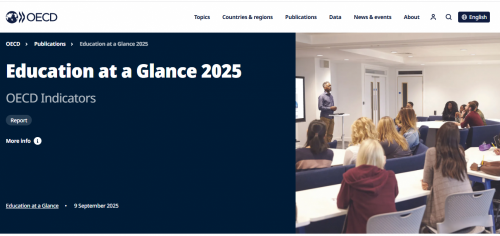
https://www.oecd.org/en/publications/education-at-a-glance-2025_1c0d9c79...
Education at a Glance is the authoritative source of information on the state of education worldwide. It offers comprehensive data on the structure, financing, and performance of education systems across OECD countries and partner economies. The report presents key insights into the output of educational institutions, the impact of learning across countries, access and participation in education, financial investment in education and school organisation.
Educational attainment remains high, but unequal opportunities persist
Unequal opportunities are holding back some learners who would benefit from a tertiary education. In all countries, children from disadvantaged backgrounds are far less likely to reach higher levels of education than those from more advantaged backgrounds. On average across the OECD, only 26% of young adults whose parents did not complete upper secondary education hold a tertiary qualification, compared to 70% of young adults with at least one tertiary-educated parent.
Supporting equitable access to tertiary education is crucial for improving social mobility, as educational achievement strongly influences success in the job market. While an upper secondary qualification offers good protection against unemployment in most countries, many high-skilled and well-paid jobs require a tertiary qualification.
Improving completion rates in tertiary education
Newly collected data from over 30 OECD and partner countries show that only 43% of new entrants to bachelor’s programmes graduate within the expected programme duration; this rises to 59% after an additional year and 70% after three additional years. Completion rates are particularly low among men, with only 63% completing a bachelor’s degree within three years beyond the expected end date, compared to 75% of women.
Policy interventions to improve completion rates can include strengthening academic preparation and career guidance in secondary education, as well as designing tertiary programmes with clearly defined sequences of courses and support measures that guide students progressively towards graduation. In addition, giving people credentials for specific skills they have learned – even if they do not complete their studies – can help them demonstrate their abilities to employers. This would make partial completion of tertiary programmes more valuable.









